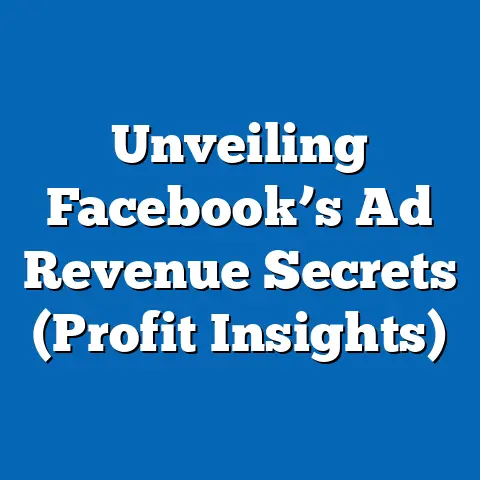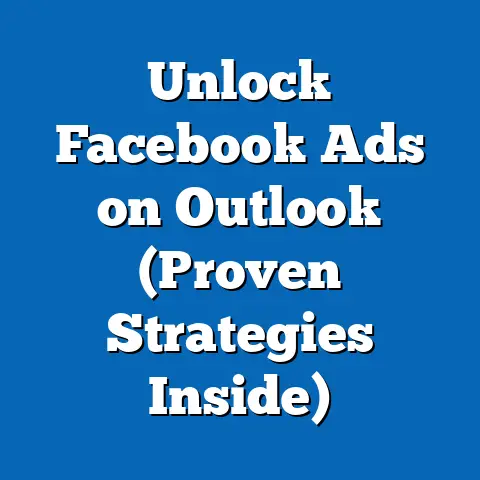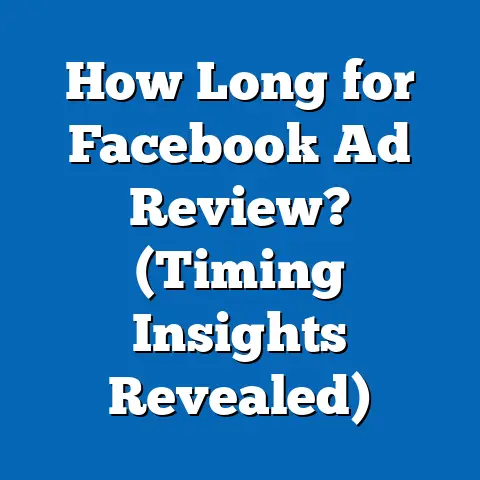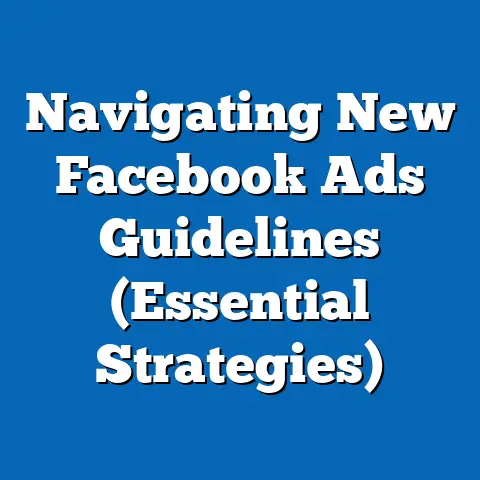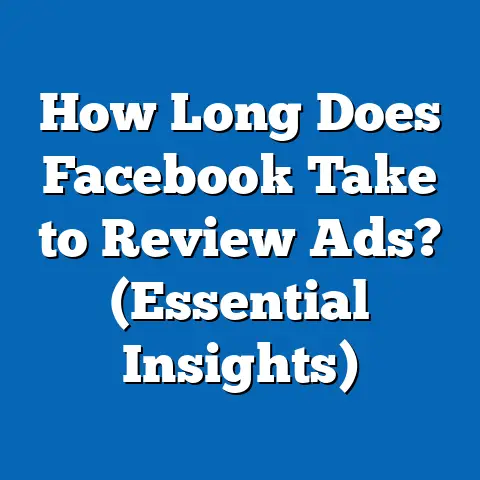Boost Mortgage Broker Facebook Ads (Expert Strategies)
As a mortgage broker, I understand the daily grind of trying to stand out in a sea of competitors, all vying for the attention of potential homebuyers. It’s a constant hustle, and in today’s digital age, that hustle increasingly takes place online, specifically on platforms like Facebook. I’ve been there, feeling overwhelmed by the complexities of Facebook’s advertising platform, wondering if my efforts were actually paying off. The struggle to generate quality leads and convert prospects into satisfied clients is real.
Many mortgage brokers I’ve spoken with share this frustration. They see the potential of Facebook’s massive user base and its powerful targeting capabilities, but they struggle to unlock its full potential. They’re left feeling like they’re throwing money into a black hole, unsure if their ads are even reaching the right people, let alone driving actual business.
Understanding the Facebook Advertising Landscape
Facebook advertising is a powerful tool, but it’s crucial to understand its various components before diving in headfirst. Think of it as learning the rules of a game before you start playing. You wouldn’t try to win a chess match without knowing how the pieces move, would you? Similarly, understanding the Facebook advertising landscape is essential for success.
Ad Formats: Choosing the Right Weapon
Facebook offers a variety of ad formats, each with its unique advantages and suitability for different marketing goals. As a mortgage broker, you need to choose the right “weapon” to effectively reach your target audience. Here’s a breakdown of some of the most popular options:
- Image Ads: Simple yet effective, image ads are a great way to showcase your brand and highlight specific mortgage products or services. I’ve found that using high-quality, visually appealing images that feature happy homeowners or stunning properties can significantly boost engagement.
- Video Ads: Video ads are incredibly engaging and allow you to tell a more compelling story. Consider creating short videos that explain the mortgage process, offer helpful tips, or feature testimonials from satisfied clients. I’ve seen video ads generate significantly higher click-through rates (CTR) compared to static image ads.
- Carousel Ads: Carousel ads allow you to showcase multiple images or videos in a single ad unit, making them ideal for highlighting different mortgage options or showcasing various aspects of your services. I’ve used carousel ads to compare different loan types, such as fixed-rate vs. adjustable-rate mortgages, with great success.
- Collection Ads: Collection ads are designed for e-commerce but can be adapted for mortgage brokers. They feature a main image or video above a collection of related products or services. You could use collection ads to showcase different mortgage packages or highlight various aspects of your brokerage.
- Lead Ads: Lead ads are specifically designed to collect leads directly within the Facebook platform. They feature a pre-filled form that users can submit with just a few taps, making it incredibly easy for them to express interest in your services. I highly recommend using lead ads to generate a steady stream of qualified leads.
The Facebook Algorithm: The Gatekeeper of Visibility
The Facebook algorithm is the complex set of rules that determines which ads are shown to which users. Understanding how the algorithm works is crucial for maximizing your ad visibility and performance. Think of the algorithm as the gatekeeper of visibility – it decides who gets to see your message.
Here are some key factors that influence the Facebook algorithm:
- Relevance: Facebook prioritizes ads that are relevant to the user’s interests and behaviors. This is where targeted advertising comes into play.
- Engagement: Ads that generate high levels of engagement (likes, comments, shares) are more likely to be shown to a wider audience.
- Ad Quality: Facebook assesses the quality of your ads based on factors like image resolution, copy clarity, and overall user experience.
- Bidding Strategy: Your bidding strategy determines how much you’re willing to pay for each ad impression or click.
- User Feedback: Negative feedback from users (e.g., reporting an ad as misleading) can negatively impact your ad visibility.
Audience Targeting: Reaching the Right People
Audience targeting is the process of defining the specific group of people you want to reach with your ads. This is arguably one of the most powerful features of Facebook advertising. Instead of broadcasting your message to everyone, you can laser-focus your efforts on those who are most likely to be interested in your services.
For mortgage brokers, effective audience targeting is paramount. You need to reach people who are actively looking to buy a home, refinance their mortgage, or invest in real estate. Here are some key targeting options to consider:
- Demographics: Target users based on age, location, income, education, and other demographic factors. For example, you might target young professionals in a specific city who are likely to be first-time homebuyers.
- Interests: Target users based on their interests, such as real estate, home improvement, personal finance, and investing.
- Behaviors: Target users based on their online behavior, such as visiting real estate websites, searching for mortgage rates, or expressing interest in homeownership.
- Life Events: Target users based on major life events, such as getting married, having a baby, or moving to a new city. These events often trigger the need for a new home or a mortgage refinance.
The Facebook Pixel: Tracking Conversions and Optimizing Campaigns
The Facebook Pixel is a small piece of code that you install on your website to track user behavior and measure the effectiveness of your ad campaigns. It’s like having a digital spy that reports back to Facebook on what users are doing on your website after clicking on your ad.
The Pixel allows you to:
- Track Conversions: Measure the number of leads, applications, or closed loans that result from your Facebook ads.
- Optimize Campaigns: Use conversion data to optimize your ad campaigns and improve your ROI.
- Retarget Users: Show ads to users who have previously visited your website or interacted with your content.
- Create Lookalike Audiences: Find new users who are similar to your existing customers.
Takeaway: Understanding the Facebook advertising landscape is crucial for success. Choose the right ad formats, understand the algorithm, target the right audience, and install the Facebook Pixel to track conversions and optimize your campaigns.
Next Steps:
- Research different Facebook ad formats and identify the ones that are most suitable for your marketing goals.
- Familiarize yourself with the Facebook algorithm and how it affects ad visibility.
- Define your target audience based on demographics, interests, behaviors, and life events.
- Install the Facebook Pixel on your website and configure conversion tracking.
Crafting Compelling Ad Content
Once you understand the Facebook advertising landscape, the next step is to create compelling ad content that grabs attention, resonates with your target audience, and drives results. Think of your ad content as your sales pitch – it needs to be persuasive, informative, and engaging.
Ad Copywriting: The Art of Persuasion
Ad copywriting is the art of crafting persuasive text that motivates users to take action. As a mortgage broker, your ad copy needs to be clear, concise, and compelling. Here are some key elements of successful ad copywriting:
- Attention-Grabbing Headline: Your headline is the first thing users will see, so it needs to be attention-grabbing and relevant to their needs. Consider using questions, statistics, or strong verbs to pique their interest. For example: “Tired of High Mortgage Rates? See if You Qualify for a Lower Rate Today!”
- Clear Value Proposition: Clearly communicate the value you offer to potential clients. What are the benefits of working with you? Do you offer competitive rates, personalized service, or expert advice? Make sure your value proposition is front and center. For example: “We Offer Low Rates, Personalized Service, and Expert Advice to Help You Find the Perfect Mortgage.”
- Compelling Call-to-Action: Tell users exactly what you want them to do. Do you want them to visit your website, fill out a lead form, or call you for a consultation? Use strong action verbs and create a sense of urgency. For example: “Apply Now,” “Get a Free Quote,” or “Call Us Today!”
Storytelling: Building Trust and Credibility
Storytelling is a powerful way to connect with your audience on an emotional level and build trust and credibility. Instead of simply listing your services, consider sharing stories of how you’ve helped other clients achieve their homeownership dreams.
- Case Studies: Share real-life examples of how you’ve helped clients overcome challenges and achieve their financial goals. For example: “We Helped John and Mary, First-Time Homebuyers, Secure a Mortgage with a Low Down Payment and Affordable Monthly Payments.”
- Testimonials: Feature testimonials from satisfied clients who have had a positive experience working with you. For example: “I Was So Impressed with [Brokerage Name]’s Personalized Service and Expert Advice. They Made the Mortgage Process Easy and Stress-Free!” – Jane Doe
- Behind-the-Scenes Stories: Share stories about your team, your values, and your commitment to providing exceptional service. This can help humanize your brand and build a stronger connection with your audience.
Visuals: Capturing Attention and Conveying Emotion
Visuals play a crucial role in the success of your Facebook ads. High-quality images and videos can capture attention, convey emotion, and communicate your message more effectively than text alone.
- High-Quality Images: Use professional-quality images that are visually appealing and relevant to your target audience. Consider featuring happy homeowners, beautiful properties, or images that evoke a sense of security and stability.
- Engaging Videos: Create short, engaging videos that tell a story, offer helpful tips, or feature testimonials from satisfied clients. Make sure your videos are well-produced, visually appealing, and optimized for mobile viewing.
- Branding: Use your brand colors, logo, and fonts consistently across all your ad visuals to create a cohesive and recognizable brand identity.
Examples of Successful Ad Campaigns:
To illustrate these strategies in action, let’s look at some examples of successful ad campaigns from other mortgage brokers:
- Example 1: A mortgage broker targeting first-time homebuyers used a carousel ad featuring images of beautiful starter homes, along with headlines like “Dreaming of Homeownership? We Can Help!” The ad copy highlighted their expertise in working with first-time buyers and offered a free consultation.
- Example 2: A mortgage broker targeting homeowners looking to refinance used a video ad featuring a testimonial from a satisfied client who had saved thousands of dollars by refinancing their mortgage. The ad copy highlighted their competitive rates and personalized service.
- Example 3: A mortgage broker targeting real estate investors used a lead ad offering a free guide to investing in real estate. The ad copy highlighted their expertise in working with investors and offered a free consultation.
Takeaway: Crafting compelling ad content is essential for grabbing attention, resonating with your target audience, and driving results. Focus on creating attention-grabbing headlines, clear value propositions, compelling calls-to-action, and using high-quality visuals.
Next Steps:
- Brainstorm ideas for attention-grabbing headlines that will resonate with your target audience.
- Develop a clear value proposition that highlights the benefits of working with you.
- Create a compelling call-to-action that motivates users to take action.
- Gather high-quality images and videos that are visually appealing and relevant to your brand.
- Research successful ad campaigns from other mortgage brokers for inspiration.
Targeting the Right Audience
I cannot stress this enough: the effectiveness of your Facebook ads hinges on your ability to target the right audience. It’s not about reaching as many people as possible; it’s about reaching the most qualified people – those who are actively looking for a mortgage broker or are likely to need your services in the near future.
Defining and Segmenting Your Target Audience
Before you even start creating your ads, you need to clearly define and segment your target audience. Who are you trying to reach? What are their needs, goals, and pain points? The more specific you can be, the more effective your targeting will be. Here are some common target audience segments for mortgage brokers:
- First-Time Homebuyers: Young professionals, couples, or families who are looking to purchase their first home. They may be unfamiliar with the mortgage process and need guidance and support.
- Refinancing Clients: Homeowners who are looking to lower their interest rate, reduce their monthly payments, or consolidate debt. They may be actively searching for better mortgage rates and terms.
- Real Estate Investors: Individuals or companies who are looking to purchase investment properties. They may need specialized mortgage products and services.
- High-Net-Worth Individuals: Affluent individuals who are looking to purchase luxury homes or investment properties. They may require personalized service and access to exclusive mortgage products.
Custom Audiences: Reaching Your Existing Contacts
Custom Audiences allow you to upload your existing customer lists (e.g., email addresses, phone numbers) to Facebook and target those users with your ads. This is a powerful way to reach your existing contacts and re-engage with past clients.
- Customer List: Upload your customer list to Facebook and target those users with ads that promote new mortgage products or services, offer special deals, or simply remind them of your expertise.
- Website Visitors: Target users who have visited your website with retargeting ads. This is a great way to re-engage with users who have shown interest in your services but haven’t yet converted.
- App Users: If you have a mobile app, you can target users who have downloaded your app with ads that promote new features or encourage them to take specific actions.
Lookalike Audiences: Finding New Customers Similar to Your Best
Lookalike Audiences allow you to find new users who are similar to your existing customers. This is a powerful way to expand your reach and target users who are likely to be interested in your services.
- Source Audience: Choose a source audience (e.g., your customer list, website visitors, app users) that represents your ideal customer.
- Similarity Percentage: Choose a similarity percentage (1-10%) that determines how closely the Lookalike Audience will resemble your source audience. A lower percentage will result in a smaller, more targeted audience, while a higher percentage will result in a larger, less targeted audience.
- Targeting Options: Refine your Lookalike Audience by adding additional targeting options, such as demographics, interests, and behaviors.
Detailed Targeting: Refining Your Audience Segments
Facebook’s detailed targeting features allow you to refine your audience segments based on a wide range of factors, including:
- Demographics: Age, gender, location, education, income, job title, relationship status, etc.
- Interests: Hobbies, passions, favorite brands, pages they like, groups they belong to, etc.
- Behaviors: Purchase history, online activity, device usage, travel habits, etc.
- Life Events: Recent marriage, new job, moving to a new city, etc.
A/B Testing: Finding the Winning Combination
A/B testing involves creating multiple versions of your ads and testing them against each other to see which performs best. This is a crucial step in optimizing your ad campaigns and maximizing your ROI.
- Audience Segments: Test different audience segments to see which responds best to your ads.
- Ad Creatives: Test different headlines, ad copy, images, and videos to see which generates the highest click-through rates and conversion rates.
- Bidding Strategies: Test different bidding strategies to see which maximizes your ROI.
Takeaway: Targeting the right audience is crucial for the success of your Facebook ads. Define and segment your target audience, use Custom Audiences and Lookalike Audiences to expand your reach, and refine your audience segments using Facebook’s detailed targeting features.
Next Steps:
- Define and segment your target audience based on their needs, goals, and pain points.
- Create Custom Audiences by uploading your existing customer lists to Facebook.
- Create Lookalike Audiences to find new users who are similar to your best customers.
- Refine your audience segments using Facebook’s detailed targeting features.
- A/B test different audience segments, ad creatives, and bidding strategies to optimize your campaigns.
Maximizing Ad Budget and ROI
Now that you’ve crafted compelling ad content and targeted the right audience, it’s time to focus on maximizing your ad budget and achieving a positive return on investment (ROI). This involves setting an effective budget, analyzing ad performance metrics, and optimizing your campaigns for maximum efficiency.
Setting an Effective Budget
Setting an effective budget for your Facebook ads is crucial for achieving your marketing goals without overspending. Facebook offers two primary budget options:
- Daily Budget: The average amount you’re willing to spend each day. Facebook may spend slightly more or less than your daily budget on any given day, but over the course of a week, your average daily spend will be close to your specified budget.
- Lifetime Budget: The total amount you’re willing to spend over the entire duration of your ad campaign. Facebook will automatically optimize your ad spend to ensure that you don’t exceed your lifetime budget.
When setting your budget, consider the following factors:
- Marketing Goals: What are you trying to achieve with your Facebook ads? Are you trying to generate leads, drive website traffic, or increase brand awareness? Your budget should align with your marketing goals.
- Target Audience Size: The larger your target audience, the more you’ll need to spend to reach them effectively.
- Competition: The more competition there is in your market, the more you’ll need to spend to stand out from the crowd.
- Campaign Duration: The longer your ad campaign runs, the more you’ll need to budget.
Analyzing Ad Performance Metrics
Analyzing your ad performance metrics is crucial for understanding what’s working and what’s not. Facebook Ads Manager provides a wealth of data that you can use to track your progress and optimize your campaigns. Here are some key metrics to monitor:
- Impressions: The number of times your ad has been shown to users.
- Reach: The number of unique users who have seen your ad.
- Click-Through Rate (CTR): The percentage of users who have clicked on your ad after seeing it.
- Cost Per Click (CPC): The average cost you’ve paid for each click on your ad.
- Conversion Rate: The percentage of users who have completed a desired action (e.g., filling out a lead form, applying for a mortgage) after clicking on your ad.
- Cost Per Conversion (CPC): The average cost you’ve paid for each conversion.
- Return on Ad Spend (ROAS): The amount of revenue you’ve generated for every dollar you’ve spent on ads.
Retargeting Ads: Re-Engaging with Interested Users
Retargeting ads are a powerful way to re-engage with users who have previously interacted with your content or visited your website but haven’t yet converted. This involves showing ads to users who have:
- Visited Your Website: Use the Facebook Pixel to track users who have visited your website and show them retargeting ads that promote relevant mortgage products or services.
- Engaged with Your Content: Show ads to users who have liked, commented on, or shared your Facebook posts or ads.
- Filled Out a Lead Form: Show ads to users who have filled out a lead form but haven’t yet applied for a mortgage.
Optimizing Ad Spend: Pausing Underperforming Ads and Reallocating Funds
Optimizing your ad spend involves pausing underperforming ads and reallocating funds to successful campaigns. This is a crucial step in maximizing your ROI and ensuring that you’re getting the most bang for your buck.
- Identify Underperforming Ads: Use Facebook Ads Manager to identify ads that have low CTRs, high CPCs, or low conversion rates.
- Pause Underperforming Ads: Pause ads that aren’t performing well and reallocate their budget to more successful campaigns.
- Test New Creatives and Targeting Options: Continuously test new ad creatives and targeting options to see what works best.
- Monitor Your Results: Regularly monitor your ad performance metrics and make adjustments as needed.
Takeaway: Maximizing your ad budget and ROI involves setting an effective budget, analyzing ad performance metrics, retargeting ads, and optimizing your ad spend by pausing underperforming ads and reallocating funds to successful campaigns.
Next Steps:
- Set an effective budget for your Facebook ads based on your marketing goals, target audience size, competition, and campaign duration.
- Analyze your ad performance metrics regularly to track your progress and identify areas for improvement.
- Implement retargeting ads to re-engage with users who have previously interacted with your content or visited your website.
- Optimize your ad spend by pausing underperforming ads and reallocating funds to successful campaigns.
Staying Compliant and Ethical in Advertising
Advertising in the mortgage industry comes with a significant responsibility to adhere to legal and ethical standards. Facebook, while a powerful advertising platform, requires careful navigation to ensure compliance, particularly with regulations like the Fair Housing Act in the United States, and similar anti-discrimination laws in other countries. As a mortgage broker, maintaining transparency and avoiding misleading claims is paramount to upholding your reputation and building trust with potential clients.
Understanding Legal and Ethical Considerations
- Fair Housing Act (FHA): This U.S. law prohibits discrimination in housing-related activities based on race, color, national origin, religion, sex, familial status, or disability. In your Facebook ads, you must avoid any language or imagery that could be interpreted as discriminatory. For instance, targeting ads exclusively to certain demographics or suggesting that certain groups are more or less likely to qualify for a mortgage is illegal and unethical.
- Truth in Lending Act (TILA): TILA requires clear and conspicuous disclosure of credit terms in advertising. If you mention specific loan terms, such as interest rates or monthly payments, you must also include other important details like the annual percentage rate (APR), the repayment period, and any other fees.
- Consumer Financial Protection Bureau (CFPB) Regulations: The CFPB has implemented various rules to protect consumers in the financial industry. Ensure your ads comply with all applicable CFPB regulations, including those related to mortgage advertising.
- Facebook’s Advertising Policies: Facebook has its own set of advertising policies that you must adhere to. These policies prohibit misleading or deceptive content, as well as ads that discriminate against or disparage individuals or groups.
Transparency in Advertising
Transparency is key to building trust with your audience. Your ads should clearly identify you as a mortgage broker and provide accurate information about your services.
- Clear Disclosures: Include clear disclosures in your ads, such as your company name, NMLS number (if applicable), and any other required disclaimers.
- Accurate Information: Ensure that all information in your ads is accurate and up-to-date. Avoid making unsubstantiated claims or guarantees.
- Avoid Misleading Claims: Don’t make claims that are likely to mislead or deceive consumers. For example, don’t advertise “guaranteed approval” or “no credit check” loans, as these claims are often misleading.
Best Practices for Compliant and Effective Ad Content
- Review Your Ads Carefully: Before publishing any ad, review it carefully to ensure that it complies with all applicable laws, regulations, and Facebook policies.
- Consult with Legal Counsel: If you’re unsure whether your ad is compliant, consult with legal counsel who specializes in advertising law.
- Use Inclusive Language and Imagery: Use language and imagery that is inclusive and welcoming to all potential clients. Avoid stereotypes or assumptions about who is likely to qualify for a mortgage.
- Focus on Benefits, Not Guarantees: Instead of guaranteeing approval, focus on the benefits of working with you, such as your expertise, personalized service, or competitive rates.
- Stay Updated: Stay up-to-date on the latest laws, regulations, and Facebook policies related to advertising.
Takeaway: Staying compliant and ethical in advertising is crucial for protecting your reputation and building trust with potential clients. Understand the legal and ethical considerations, prioritize transparency, and follow best practices for creating compliant and effective ad content.
Next Steps:
- Familiarize yourself with the Fair Housing Act, TILA, CFPB regulations, and Facebook’s advertising policies.
- Review your existing ads to ensure that they comply with all applicable laws, regulations, and policies.
- Consult with legal counsel if you have any questions or concerns about your ad compliance.
- Develop a compliance checklist to use when creating new ads.
- Stay updated on the latest laws, regulations, and Facebook policies related to advertising.
Measuring Success and Continuous Improvement
Advertising on Facebook isn’t a “set it and forget it” endeavor. I’ve found that the real magic happens when you consistently measure your results and use those insights to improve your campaigns. Setting clear goals, analyzing data, and adapting your strategies are vital to maximizing your return on investment and staying ahead of the curve.
Setting Clear Goals and KPIs
Before launching any Facebook ad campaign, you need to define your goals and key performance indicators (KPIs). What do you want to achieve with your ads? How will you measure success? Here are some common goals and KPIs for mortgage brokers:
- Goal: Generate Leads
- KPIs: Number of leads generated, cost per lead (CPL), lead conversion rate
- Goal: Drive Website Traffic
- KPIs: Website traffic, click-through rate (CTR), cost per click (CPC), bounce rate
- Goal: Increase Brand Awareness
- KPIs: Reach, impressions, engagement (likes, comments, shares)
- Goal: Increase Loan Applications
- KPIs: Number of loan applications, cost per application, application approval rate
- KPIs: Number of leads generated, cost per lead (CPL), lead conversion rate
- KPIs: Website traffic, click-through rate (CTR), cost per click (CPC), bounce rate
- KPIs: Reach, impressions, engagement (likes, comments, shares)
- KPIs: Number of loan applications, cost per application, application approval rate
Analyzing Campaign Data and Insights
Facebook Ads Manager provides a wealth of data and insights that you can use to track your progress and optimize your campaigns. Take the time to analyze your campaign data regularly and identify strengths and weaknesses. Here are some key areas to focus on:
- Audience Performance: Which audience segments are performing best? Are there any segments that are underperforming?
- Ad Creative Performance: Which ad creatives are generating the highest click-through rates and conversion rates? Are there any creatives that are underperforming?
- Placement Performance: Which ad placements (e.g., Facebook News Feed, Instagram Feed, Audience Network) are generating the best results? Are there any placements that are underperforming?
- Time of Day/Day of Week Performance: Are there certain times of day or days of the week when your ads perform better?
Strategies for Continuous Improvement
Based on your analysis of campaign data and insights, you can implement strategies for continuous improvement. Here are some common strategies to consider:
- Refine Ad Creatives: Test different headlines, ad copy, images, and videos to see which generates the best results.
- Test New Audience Segments: Experiment with different audience segments to see which responds best to your ads.
- Adjust Bids and Budgets: Adjust your bids and budgets based on performance data. Increase bids for high-performing ads and decrease bids for underperforming ads.
- Optimize Ad Placements: Focus your ad spend on the placements that are generating the best results.
- Improve Landing Page Experience: Ensure that your landing pages are relevant to your ads and provide a seamless user experience.
Staying Updated with Facebook’s Changing Algorithms and Features
Facebook is constantly evolving, with new algorithms, features, and policies being introduced regularly. To remain competitive, it’s essential to stay updated with these changes and adapt your strategies accordingly.
- Follow Facebook’s Official Blog and Newsroom: Stay informed about the latest updates and announcements from Facebook.
- Attend Industry Conferences and Webinars: Learn from experts and network with other marketers.
- Join Online Communities and Forums: Connect with other Facebook advertisers and share tips and insights.
- Experiment with New Features: Be willing to experiment with new features and technologies as they become available.
Takeaway: Measuring success and continuous improvement are essential for maximizing your ROI on Facebook ads. Set clear goals and KPIs, analyze campaign data and insights, implement strategies for continuous improvement, and stay updated with Facebook’s changing algorithms and features.
Next Steps:
- Define clear goals and KPIs for your Facebook ad campaigns.
- Analyze your campaign data and insights regularly to track your progress and identify areas for improvement.
- Implement strategies for continuous improvement based on your analysis of campaign data and insights.
- Stay updated with Facebook’s changing algorithms and features.
Conclusion
We’ve covered a lot of ground in this guide, from understanding the Facebook advertising landscape to crafting compelling ad content, targeting the right audience, maximizing your ad budget, staying compliant, and measuring your success. These strategies, when implemented effectively, can significantly boost your visibility, generate more leads, and ultimately grow your mortgage brokerage business.
Remember, Facebook advertising is not a one-size-fits-all solution. It requires experimentation, analysis, and continuous improvement. Be willing to test different strategies, track your results, and adapt your approach as needed.
I encourage you to implement these strategies in your own Facebook ad campaigns and share your success stories with the community. By working together and sharing our knowledge, we can all achieve greater success in the competitive world of mortgage marketing. The journey to mastering Facebook ads can feel daunting at times, but with the right knowledge and a commitment to continuous learning, you can unlock its immense potential and achieve your business goals. Good luck, and I look forward to hearing about your success!


